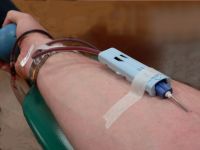- Have any questions? Contact us!
- info@dr-rath-foundation.org

What the ‘ARV defendants’ don’t want you to know about ARVs – part 1
October 28, 2008
What the ‘ARV defendants’ don’t want you to know about ARVs – part 3
October 28, 2008What the ‘ARV defendants’ don’t want you to know about ARVs – part 2

No long-term clinical proof for survival exists from controlled studies
| Questions and Answers About Aids |
| Does HIV exist? |
| Does HIV cause AIDS? |
| Does everyone who is diagnosed “HIV-positive” develop AIDS? |
| For more Q&As click here |
| More information |
| Back to introduction |
| Click here to read Dr. Raxit Jariwalla’s biography. |
| Potential beneficiaries for whom these web pages were built: More |
There have been very few controlled studies mostly short-term that have looked at the effects of ARVs on clinical parameters such as survival or disease progression.
The licensing study of AZT (azidothymidine), the first ARV, to be used in AIDS patients (Fischl et al., (a) New England Journal of Medicine(1987); 317: 185-191); and (b) Journal of the American Medical Association (1989); 262: 2405-2410) provides the only evidence for clinical benefit of ARVs but the benefits were short-term in duration and were attended by serious adverse reactions.
Approximately 24 % of AZT recipients (4-month survivors) developed anaemia (a reduced number of red blood cells or haemoglobin concentration), compared to 4% of those who received a placebo. Moreover, 21% of the AZT recipients had to be kept alive by red-cell transfusions compared to 4% of the placebo (Richman et al., New England Journal of Medicine (1987); 317: 192-197).
Anaemia is the result of the toxic effect of ARVs on the bone marrow, the production site of red and white blood cells.
Moreover, the short-term benefit of this ARV study was not maintained in a follow-up 21-month study (Fischl et al., 1989), which found a rapid decline in the survival benefit of AZT reported for the first 4 months. A few years later, the British-French Concorde study (Seligman et al., Lancet (1994); 343: 871-878) showed unambiguously that AZT was unable to prevent AIDS in HIV-asymptomatic individuals.

The licensing study of AZT provides the only evidence for clinical benefit of ARVs but the benefits were short-term in duration and were attended by serious adverse reactions. Moreover, 21% of the AZT recipients had to be kept alive by red-cell transfusions.
Because there are no other controlled long-term studies, the ARV proponents cite uncontrolled surveys such as the ones by Hogg et al., 2001 (ARVs are not a cure for AIDS) and Palella et al New Engl J Med(1998) 338: 853-860.
However, these surveys only compare one ARV drug regimen with another without inclusion of an ARV-free control group.
ARV proponents also rely on surrogate markers to make claims about survival. Two commonly used surrogate markers are HIV viral load or CD4 count, which have been routinely employed to approve ARV drugs over the last 2 decades. However, an improvement in surrogate markers, which leads to no corresponding improvement in clinical symptoms is not a significant improvement.
If the description “life-saving” or “life prolonging” for so-called “highly active antiretroviral therapy” (HAART) is based on studies using surrogate biomarkers and not based on measurement of survival or disease progression endpoints, then it is misleading since lowering of viral load or improvement in CD4 count has not been unequivocally shown to lead to improvement in survival or life extension. Furthermore, since HAART drugs:
- are not a cure for AIDS according to product information sheets; and
- have not been proved to have significant clinical benefits for those with AIDS;
the terms “life-prolonging” or “life-saving” are inherently misleading.
In summary, there is no significant evidence (demonstrated unequivocally in controlled trials) that ARVs confer clinical benefits beyond limited effects seen on the immune system and a short-term improvement in survival attended by serious adverse reactions.


